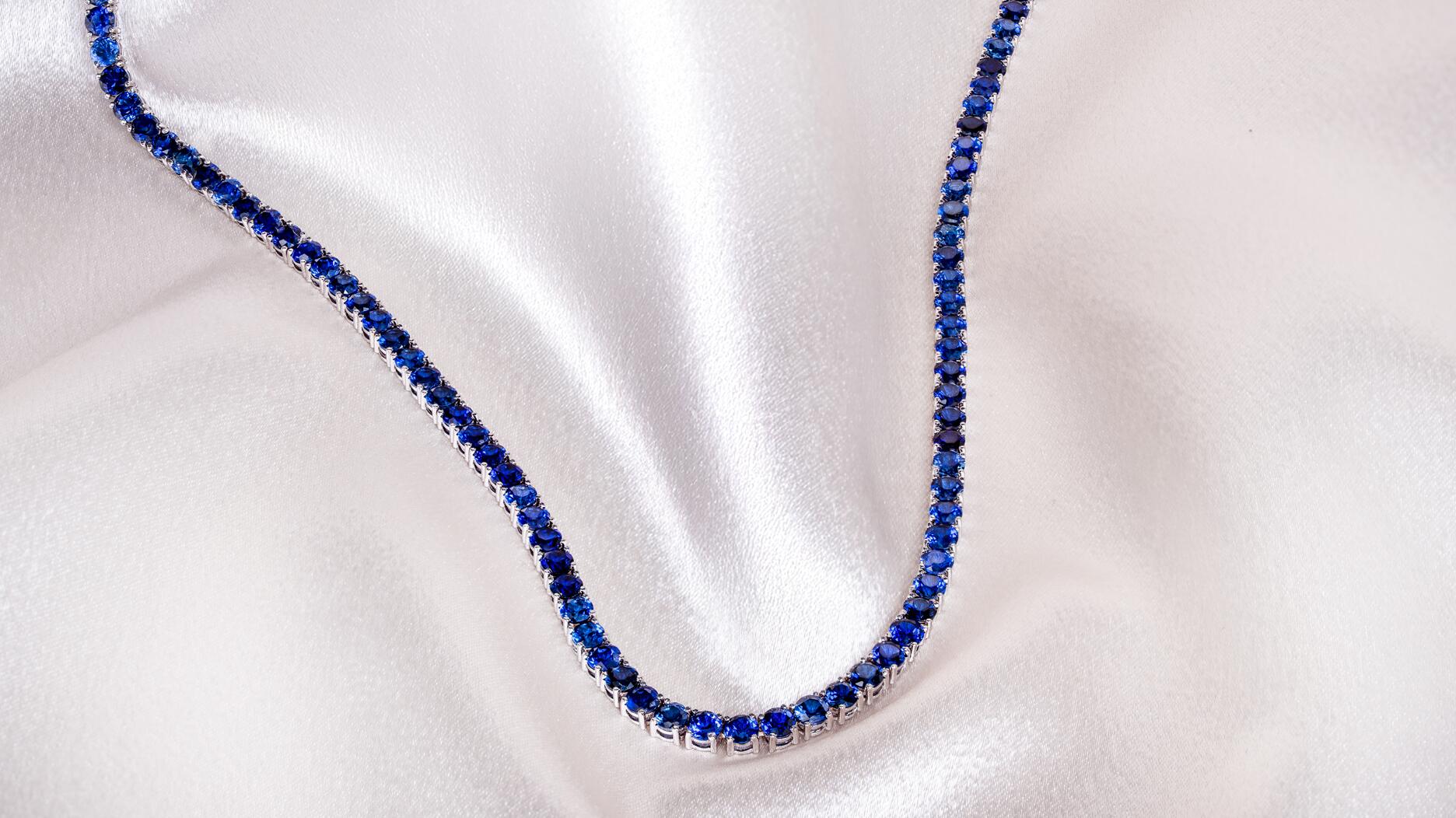Berta de Pablos-Barbier will replace Alexander Lacik at the start of January, two months earlier than expected.
Debunking the Myth of the ‘Retail Apocalypse’
It’s allegedly the end of the retail world as we know it, but Associate Editor Lenore Fedow feels fine.

Have you ever seen “Doomsday Preppers”? It was a show on National Geographic that followed around people who were preparing for the end of the world.
Whether it’s a collapse of the global financial system or a natural disaster, these preppers are convinced the end is nigh, stockpiling barrels of water and freeze-dried dinners.
I’ve heard retail is going to meet a similar disastrous ending, complete with boarded-up storefronts as far as the eye can see and parking lots full of tumbleweeds. UPS trucks will whiz by crumbling strip malls to deliver everyone’s latest Amazon purchases.
The “retail apocalypse.” The mall meltdown.
There have been quite a few clever names used to describe the mass closure of retail stores across the United States.
Household-names retailers like Toys “R” Us and Payless have closed for good, with mall favorites such as Charming Charlie, Avenue, Gymboree and Dressbarn following suit.
More than 7,900 stores have closed as of August, according to Coresight Research, with the number estimated to reach 12,000 by the end of the year.
Investment bank UBS predicts an additional 75,000 stores will close by 2026.
Those are scary statistics at face value, but a step back may calm your nerves.
Statistics are most useful when put in context, so let’s do just that.
Retailers opened more stores than were closed in 2019.
I like to bring data to my stories, even the more informal, first-person ones.
In preparation for this blog, I read through two studies, each of which came to two totally different conclusions about the state of retail.
Research group IHL said more stores had opened than closed this year, counting 8,428 closures and 11,393 openings.
A study by Coresight Research concluded the opposite, finding 7,922 closures and 3,231 openings.
I took a look into the discrepancy and found that the difference in data stems from what exactly the group considers to be a retailer.
Coresight Research found more closures than openings because its retailer pool was narrower, focusing mainly on department stores and specialty retail stores.
In contrast, IHL looked at 1,660 private and public retailers with 50 or more stores, spanning nine different retail segments from department stores and specialty retail to superstores and chain restaurants.
Across the nine segments, for each company closing stores, 5.2 are opening stores, according to the IHL study.
Department and specialty stores have closed 9,651 locations since January 2017. All other segments have opened nearly twice that many, seeing a net increase of 18,226.
After
U.S. retail sales are on the rise.
The retail landscape is changing, but sales are still growing.
U.S. retail sales are up 3 percent year-over-year, totaling $82.7 billion through June 2019, according to IHL’s study.
“Without question, there are many challenges to retailers today, but overall the state of the retail industry is strong,” IHL said.
Since January 2017, the U.S. retail industry has increased sales by $565.7 billion and seen a net increase of 8,575 stores.
All retail is not created equal.
There are problem areas in the retail landscape, but the overall picture isn’t all doom and gloom.
The closures are concentrated in the department store and specialty retail segments, said IHL. Within those two segments, the closures have been driven by a handful of companies.
A total of 20 companies represented 75 percent of all net store closings to date in 2019.
Payless ShoeSource alone accounts for 2,354 of the store closings.
Samuels Jewelers, which shuttered its 120 stores earlier this year after filing bankruptcy in August 2018, and Sterling Jewelers, the Signet subsidiary that operates Kay Jewelers and Jared stores, also cracked the top 20 list of retailers that had closed the most locations in 2019.
“The health of retail is widespread; those retailers that are sick are limited to a focused group of retailers,” the study states.
“In general, we see company-specific issues (too much debt, over- expansion, poor models) in the companies that are closing stores or are going bankrupt, not a systemic overall retail issue.”
Drug stores as well as restaurants and bars both saw sales rise 4 percent year-over-year as of June.
Restaurant sales for the last 18 months, January 2018 to June 2019, have increased by $55 billion.
Total restaurant sales in 2019 are expected to reach $744 billion, totaling more than the GDP of South Africa, as per the study.
“The canary in the coal mine for retail is what happens with restaurants,” according to IHL.
Money used to eat out is considered disposable income, making it a good indicator of how consumers are viewing the economy. If a consumer is cutting back on household spending, that’s usually reflected in restaurant sales.
Grocery stores saw a 3 percent rise in sales while sales for mass merchants, meaning big-box stores like Walmart and Target, rose 2 percent.
On the flip side, sales from department stores fell 4 percent while electronics and appliances sales were down 5 percent.
Sales at specialty stores, specifically those that sell sports gear, books, and hobby supplies, dipped 7 percent.
Consumers still value physical stores.
The study notes the decline of mall stores, pointing to anchor stores with outdated business models and mall owners not providing the necessary infrastructure.
However, physical stores that can adapt to change still have a role to play.
Online-only retailers saw sales climb 11 percent to $34 billion as of June 2019, according to IHL’s study, but that doesn’t mean traditional retailers are being phased out.
The study found that e-commerce currently represents 19 percent of all retail sales with 10 percent of those sales coming from e-tailers. The remaining 9 percent stems from traditional retailers.
Online sales are expected to account for 25 percent of retail by 2021, with physical stores involved in 81 percent of all retail fulfillment.
“The greatest areas of growth are not e-commerce that excludes stores, but rather is inclusive of stores for fulfillment,” the study states.
IHL noted that online and traditional retailers have an interdependent relationship. If physical stores close in an area, online sales in the area will also decrease.
Once-online-only companies like Amazon and Warby Parker have taken notice, opening physical stores to complement their online presences.
So, now that we have some facts and figures laid out, is the “retail apocalypse” upon us?
Well, department stores and specialty stores are struggling, but there’s still growth to be found in big- box stores, restaurants and other segments.
Perhaps it’s more of a “retail renaissance,” which is, incidentally, what IHL named its study quoted throughout this article.
The retail landscape is changing, but that doesn’t mean there isn’t a place for traditional retailers looking to change and grow alongside it.
Be ready for some rough waters, but don’t get into your underground bunker just yet.
Editor’s note: This story was updated post-publication to correct an error. Previously, the story stated that five stores opened for every one that closed in 2019; that is incorrect. What the IHL study states is that for each company closing stores, 5.2 are opening stores.
The Latest

Sotheby’s held its first two jewelry sales at the Breuer building last week, and they totaled nearly $44 million.

Winners will receive free registration and lodging for its fourth annual event in Detroit.

How Jewelers of America’s 20 Under 40 are leading to ensure a brighter future for the jewelry industry.

Here are six ideas for making more engaging content for Instagram Reels and TikTok, courtesy of Duvall O’Steen and Jen Cullen Williams.


The honorees include a notable jewelry brand, an industry veteran, and an independent retailer.

Carlos Jose Hernandez and Joshua Zuazo were sentenced to life without the possibility of parole in the 2024 murder of Hussein “Sam” Murray.

Roseco’s 704-page catalog showcases new lab-grown diamonds, findings, tools & more—available in print or interactive digital editions.

Yood will serve alongside Eduard Stefanescu, the sustainability manager for C.Hafner, a precious metals refiner in Germany.

The New Orleans jeweler is also hosting pop-up jewelry boutiques in New York City and Dallas.

Set in a Tiffany & Co. necklace, it sold for $4.2 million, the highest price and price per carat paid for a Paraíba tourmaline at auction.

The jeweler’s “Deep Freeze” display showcases its iconic jewelry designs frozen in a vintage icebox.

Take luxury gifting to new heights this holiday season with the jeweler’s showstopping 12-carat sphene ring.

This year's theme is “Unveiling the Depths of the Ocean.”

In its annual report, Pinterest noted an increase in searches for brooches, heirloom jewelry, and ‘80s luxury.

Starting Jan. 1, customers can request the service for opal, peridot, and demantoid garnet.

The 111-year-old retailer celebrated the opening of its new location in Salem, New Hampshire, which is its third store in the state.

The new catalog features its most popular chains as well as new styles.

The filmmaker’s personal F.P. Journe “FFC” prototype was the star of Phillips’ recent record-setting watch auction in New York.

The new location in the Design District pays homage to Miami’s Art Deco heritage and its connection to the ocean.

Inflations, tariffs, and politics—including the government shutdown—were among consumers’ top concerns last month.

“Longtime favorite” presenters, as well as first-time speakers, will lead talks and workshops at the annual event in Tucson next year.

Silas Smith of Meridian Metalworks won the challenge with his pendant that blends Australian and American landscapes.

The sale of the 31.68-carat, sunset-hued stone was part of Sotheby’s first series of events and auctions in Abu Dhabi.

Most customers who walk into your store this month have made up their minds. Your job is to validate their choice, Emmanuel Raheb writes.

The collection features characters and motifs from Ukrainian folklore, including an enchanted mirror and a magic egg.

MatrixGold 3.11, the newest version of the jewelry design program, offers more flexibility, precision, and creative control.


























